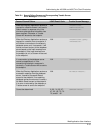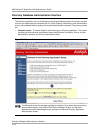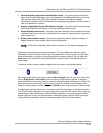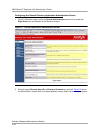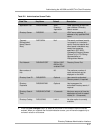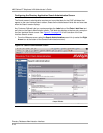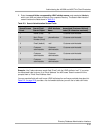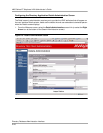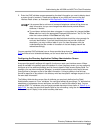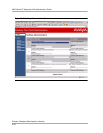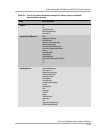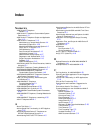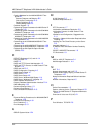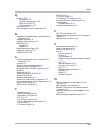
Index
IN-3
Q
QoS 2-4, 4-25
DIFFSERV 4-26
IEEE 802.1D and 802.1Q 4-25
RSVP and RTCP 4-29
UDP Port Selection 4-27
QoS and VoIP 2-4
QoS, and 4600 Series IP Telephones 4-25
R
Registration and Authentication, of 4600 Series IP
Telephones
2-13
Related Documents 1-6
Reliability and Performance 2-11
Requirements 3-1
Hardware 3-1
Software 3-4
Reset Administrative Option 5-8
Restart the Telephone 5-10
RSVP and RTCP 4-29
S
Scripts and Application Files, for 4600 Series IP
Telephones 4-19
Security 2-12
Signaling, Audio and Management 2-7
Single Connection Architecture 2-13
Site-Specific Option Number, customizing 4-33
SNMP 2-5
SNMP and VoIP 2-5
Software Alternatives, for DHCP 4-7
Software Checklist 4-5
Software Requirements 3-4
Software, for 4600 Series IP Telephones 2-13
Syntax Implementation, for WTA Applications C-18
System Values, Reset 5-8
System Values, Resetting 5-8
T
Tandem Coding 2-2
TCP/UDP Port Utilization 2-6
Terms Used in This Guide 1-4
TFTP 2-3, 4-17
TFTP (Suite Pro), Avaya 4-18
TFTP and DHCP Server Administration 4-5
TFTP and VoIP 2-3
TFTP Generic Setup 4-18
TFTP Server 2-14
TFTP Server Setup 4-17
TFTP Settings File, contents of 4-24
Thin Client Directory, Administering the D-1
Troubleshooting
Parameter Values 5-12
Troubleshooting Guidelines 5-1
U
UDP/TCP Port Utilization 2-6
Upgrade Script and Application File, Choosing the
Right 4-21
Upgrade Script, contents of 4-22
V
View Administrative Option 5-11
VLAN Considerations 4-29
Voice over IP. See VoIP 2-1
VoIP 2-1
Delay and Jitter 2-2
DHCP 2-3
H.323 Standard 2-3
IP Address Lists and Station Number Portability
2-11
NAT 2-4
Network Assessment 2-5
Overview, Voice over IP 2-1
QoS 2-4
Reliability and Performance 2-11
Security 2-12
SNMP 2-5
Tandem Coding 2-2
W
WAN Considerations, for 4600 Series IP Tele-
phones
2-13
Web Application User Interface D-7
Websites, Creating for the 4610SW and 4620 IP
Telephones C-1
Websites, Creating for the 4630/4630SW IP Tele-
phone B-1
Wireless Telephony Applications (WTA) C-17



